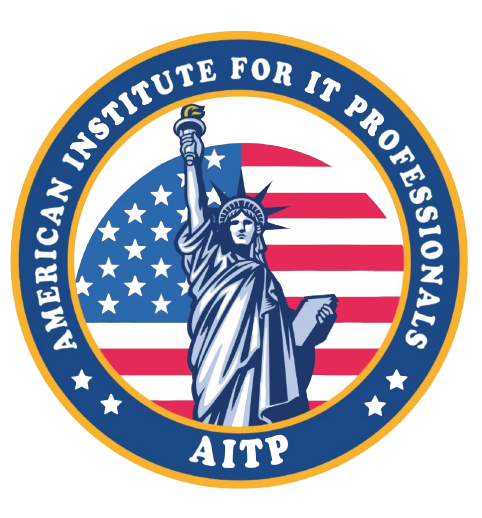Python’s scope is nearly limitless. Data scientists, engineers, and developers are flocking to Python because it is versatile for applications ranging from web development to data science and from artificial intelligence to cybersecurity. In this program, you will learn the essentials of Python coding:
Program Modules
Data Science is one of the hottest professions of the decade, and the demand for data scientists who can analyze data and communicate results to inform data driven decisions has never been greater. This bootcamp will help anyone interested in pursuing a career in data science by teaching them fundamental skills to get started in this in-demand field.
The bootcamp consists of 8 weeks of live online courses that will provide you with the foundational skills required for Data Science, including open-source tools and libraries, Python, Statistical Analysis, SQL, and relational databases. You’ll learn these data science pre-requisites through hands-on practice using real data science tools and real-world data sets.
Upon successfully completing these courses, you will have the practical knowledge and experience to delve deeper in Data Science and work on more advanced Data Science projects.
Training Intro: Advance Data Analytics using SQL, Python, Statistics, Power BI and Tableau (Bootcamp)
A brief outline of the certificate:
• 6 hours per week for a 2 months duration
• Automated assessments and quizzes
• Repeat unlimited times at no additional cost
• Verified and Certified certificate
• 24×7 support to answer your queries and doubts
• Capstone project
• Resume/Interview preparation & Job placement assistance
Modules
-
Introduction of Python
Operators in Python
Variables
Data Types
Conditions (if-else) (Python3- if, if-else, Nested-if)
Loops
Functions
Data Structures (for Python)
Exception Handling
-
Implementation of Mean, Variance, and Standard Deviation (in Python using NumPy)
Derivative and Function minimization
Probability Distribution
Set I – Uniform Distribution
Set II – Exponential Distribution
Set III – Normal Distribution
Confidence Interval
Covariance and Correlation
Random Variables (With Examples)
Hypothesis Testing
Basic Understanding
T-testing
Paired T-testing (detailed overview)
P-value in ML
F-Test
Z-test
Mathematical Explanation in ML
Chi-Squared Test for Feature Selection
ANOVA Test in Python
ANOVA Test using one-way
ANOVA using two-way
-
Basics of relational databases
Basic Queries: SELECT, WHERE LIKE, DISTINCT, BETWEEN, GROUP BY, ORDER BY
Advanced Queries: CTE, Subqueries, Window Function
Joins: Left, Right, Inner, Full
Stored procedures and functions
Assignment
-
WEEK 4: MICROSOFT POWERBI
Understanding Business Intelligence
Understanding Power BI
Getting Started with Power BI
Getting Data in Power BI Desktop
Data Transformation
Introduction to Power Query (M Formula Language)
Data Modelling
Introduction to DAX
Data Visualization
Creating Custom Visuals
Visual Interaction
Exploring Filters
Creating Custom Slicers
Exploring Power BI Desktop Features
Power Bi service Features
Dashboard
-
WEEK 5: COUNTINUATION OF POWERBI
-
Understanding Tableau
Getting Started With Tableau
Getting Data in Tableau Desktop
Data Visualization
Creating Custom Visuals
Visual Interaction
Exploring Filters
Dashboard
-
WEEK 7: Data Pre-processing, Data Visualization, Exploratory Data Analysis
Overview of Data Visualization
Data Visualization with Python (includes use cases of libraries such as Matplotlib, Seaborn)
EDA in Python – Set I (basic techniques to analyze the data)
EDA in Python – Set II (basic visual techniques)
EDA on Iris Dataset (explanation of EDA & techniques involved for data visualization)
EDA using Seaborn – Titanic Dataset (explanation of EDA & techniques involved for data visualization)
-
Applied Learning Project
All courses in the bootcamp contain multiple hands-on labs and assignments to help you gain practical experience and skills with a variety of data sets. Build your data science portfolio from the artifacts you produce throughout this program. Course-culminating projects include:
Extracting and graphing financial data with the Pandas data analysis Python library
Generating visualizations and conducting statistical tests to provide insight on housing trends using census data
Using SQL to query census, crime, and demographic data sets to identify causes that impact enrollment, safety, health, and environment ratings in schools
*Please Note: All projects and class assignments are based upon instructors’ discretion and the faculty can modify or change the projects anytime.
Program Experience
Office Hours with Learning Facilitators
Coding Exercises in Each Module
Dedicated Program Support Team
Bonus Content on Advanced Topics
Certification & Digital Badge
Who Should Attend?
This online program is designed for anyone who is interested in acquiring programming skills in Python & Machine Learning. No prior programming knowledge is required.
Certificate
Upon successful completion of the program, participants will receive a digital certificate of completion from American Institute for IT Professionals. This is a training program, and it is not eligible for academic credit.
Why Python?
Python is a good starting point for first-time coders. It uses simple, natural language syntax, almost like spoken English. It is powerful and it is versatile, favored by such diverse industry giants as Netflix, PayPal, NASA, Disney, and Dropbox. Python is used by 87% of data scientists.
User-Friendly Syntax: As an interpreted language, Python has simpler, more concise syntax than Java. Python’s simple, concise syntax makes it easy to write algorithms with just a few lines of code.
Open-Source Libraries: Pre-written code is readily available, with algorithms at your disposal, so you do not have to start every project from scratch. You can benefit from highly specific libraries – physics, web development, gaming, machine learning – by simply importing algorithms and applying them to your own data. It is plug and play at its best, with new functionalities being added all the time.
Community Exchanges: Python’s popularity means it has great community support, with almost 8 million Python developers across the world to help you debug or resolve a programming challenge.
Compatibility: Python is a cross-platform language and can be integrated easily with Windows and other platforms.
Adaptability: Almost every field is adopting Python and needs both generalists and specialists who know how to use it. Fields as varied as gaming, web development, healthcare, and fintech prefer Python over other programming languages, making it the must-learn language for STEM professionals and data scientists.
Why Machine Learning?
Machine learning algorithms are transforming systems, experiences, processes, and entire industries. It’s no wonder that business leaders see these data-driven technologies as fundamental for the future—and that practitioners fluent in both fields are in high demand.
At American Institute for IT Professionals, we are fascinated by their world-changing potential, and we’ve created the training program that will come Master’s degree level content, to help students understand the fundamentals of AI and machine learning and how to apply them to solve complex, real-world problems.
Why SQL?
Our SQL course content is the perfect place to start if you are new to the world of database programming or database administration. In addition to learning basic SQL commands and syntax – such as how to insert, update, and delete information from tables – users will be able to practice those same commands through our free online SQL interpreter. Enter SQL commands to receive immediate results and experiment to better understand how database concepts such as table drops and table selects work.
The SQL tutorial and online interpreter currently supports a subset of ANSI SQL. The basics of commands such as select, insert, update, delete, and drop will be covered in this gentle introduction to Structured Query Language (SQL).
If you are already familiar with the basics of SQL, you can still use this database course as a refresher and practice common SQL commands and statements.
Why Statistics?
Statistics is a core component of data analytics and machine learning. It helps you analyze and visualize data to find unseen patterns. If you are interested in machine learning and want to grow your career in it, then learning statistics along with programming should be the first step. In this article, you will learn all the concepts in statistics for machine learning.
Statistics is a branch of mathematics that deals with collecting, analyzing, interpreting, and visualizing empirical data. Descriptive statistics and inferential statistics are the two major areas of statistics. Descriptive statistics are for describing the properties of sample and population data (what has happened). Inferential statistics use those properties to test hypotheses, reach conclusions, and make predictions (what can you expect).


.jpeg)
.jpeg)
.jpeg)
.jpeg)
.jpeg)
.jpeg)